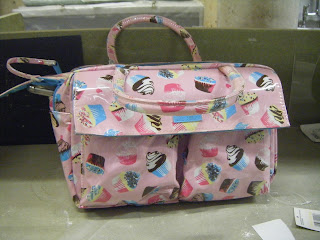I finished the "super secret Christmas present" that I mentioned in my last post, and this post is about it. I decided not to give it to who I was going to, because as far as I can tell, he hates presents (and Christmas actually). We even had a family discussion about it. So this bag will be going to a mystery person on the internet as part of a Secret Santa I do every year.
If you're part of the DIY SASS, go away! This might be your present!
I'd picked up this awesome origami Swedish animals canvas from IKEA a while back, with the intention of making my dad something out of it (he is very into origami). IKEA actually do some pretty cool fabrics at affordable prices. I think this design was £3.99 per metre, which is really good for a furnishing fabric. It's always worth checking out what they've got in.
Apologies once again for crap photos- it is so dark here!
I chose to work from this Simplicity pattern which I bought years ago:
When I was first learning to sew I made a few of those little totes (bottom right) because they were cheap and fun to decorate. They were useless though, absolutely tiny.
This messenger bag has the exact opposite problem. It's huge!
If I carry it without anything stiff (e.g sketchbook) in it, it literally wraps around half of my body. I hope my secret Santa recipient is a big person.
The strap has a buckle on it so it's adjustable, and the entire thing is topstitched in red which would look good if I could sew in a semi straight line.
The bag is fully lined with 2 internal pockets, one a segmented pen pocket and the other a zipped one for small items (this wasn't in the instructions, I added it myself). In addition, there are 2 external pockets which fasten with Velcro.
I'm actually quite pleased with the bag, if you ignore the slightly wonky topstitching, it's actually pretty professional looking. Which makes me even more pissed off that the thing is ridiculously large. It's incredibly annoying.
Sorry gift receiver! I may make you something else to make up for this x
If you're part of the DIY SASS, go away! This might be your present!
I'd picked up this awesome origami Swedish animals canvas from IKEA a while back, with the intention of making my dad something out of it (he is very into origami). IKEA actually do some pretty cool fabrics at affordable prices. I think this design was £3.99 per metre, which is really good for a furnishing fabric. It's always worth checking out what they've got in.
Apologies once again for crap photos- it is so dark here!
When I was first learning to sew I made a few of those little totes (bottom right) because they were cheap and fun to decorate. They were useless though, absolutely tiny.
This messenger bag has the exact opposite problem. It's huge!
If I carry it without anything stiff (e.g sketchbook) in it, it literally wraps around half of my body. I hope my secret Santa recipient is a big person.
The strap has a buckle on it so it's adjustable, and the entire thing is topstitched in red which would look good if I could sew in a semi straight line.
The bag is fully lined with 2 internal pockets, one a segmented pen pocket and the other a zipped one for small items (this wasn't in the instructions, I added it myself). In addition, there are 2 external pockets which fasten with Velcro.
I'm actually quite pleased with the bag, if you ignore the slightly wonky topstitching, it's actually pretty professional looking. Which makes me even more pissed off that the thing is ridiculously large. It's incredibly annoying.
Sorry gift receiver! I may make you something else to make up for this x





































